This image of Jupiter was taken by Voyage I.
Click on image for full size
Courtesy of NASA
Discover Jupiter
Jupiter is the largest planet in our solar system. It is also one of the brighter objects in the night sky. No one knows for sure who discovered Jupiter, but we know the ancient Greeks named him after the god, Zeus.
The most prominent feature of Jupiter is the Great Red Spot. This violent storm has been observed from Earth since the 1600's. But it wasn't until the 1930's that we knew what Jupiter was made of. Astronomer Rupert Wildt researched the planet and found the atmosphere is mostly hydrogen and helium.
Beginning in 1973, the United States sent four spacecraft to observe this massive planet. Pioneer 10 and 11, along with Voyager I and II, sailed past Jupiter. They gathered many images that we still see today.
Jupiter's moons are interesting too! Galileo discovered four of the larger moons: Io, Europa, Ganymede and Callisto in 1610. Most of the other moons were found by the Voyager spacecraft during its flyby. The Jupiter system is almost like a little solar system. Astronomers may continue to discover even more moons as more powerful telescopes become available.
You might also be interested in:
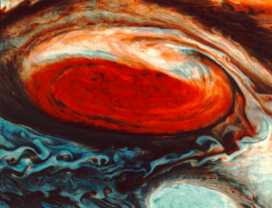
The Great Red Spot is thought to be a hurricane which has been raging on Jupiter for at least 400 years. The connected page shows an image of the Great Red Spot next to Tropical Storm Emily for comparison.
...more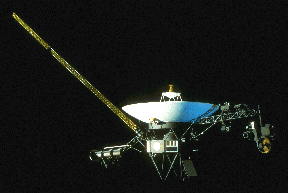
The rare geometric arrangement of planets Jupiter, Saturn, Uranus, and Neptune in the 1980's made it possible for the Voyager spacecrafts to visit them over a 12 year span instead of the normal 30. They
...more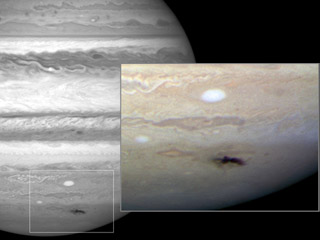
On the night of July 19, 2009, Anthony Wesley noticed a dark splotch on Jupiter that hadn't been there before. Wesley, an amateur astronomer in Australia, had discovered the remnants of a huge impact on
...more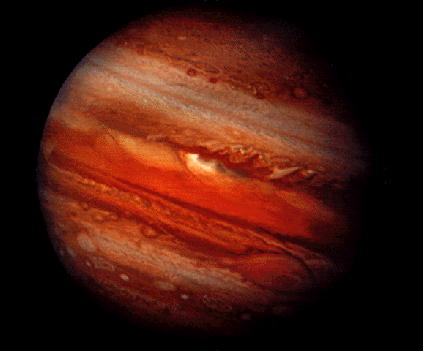
Jupiter is the largest planet in our solar system. It is also one of the brighter objects in the night sky. No one knows for sure who discovered Jupiter, but we know the ancient Greeks named him after
...more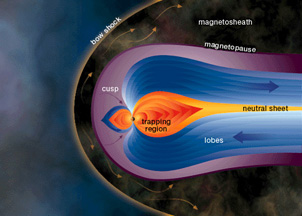
Jupiter's magnetosphere is a unique object in the solar system. It is the biggest object in the entire solar system. Not only is it big enough to contain all of Jupiter's moons, but the sun itself could
...more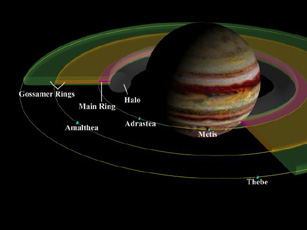
Jupiter has a series of rings circling it! Unlike Saturn's rings, which are clearly visible from Earth even through small telescopes, Jupiter's rings are very difficult to see. So difficult, in fact, that
...more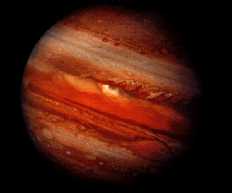
Atmospheres of the giant planets have definetely evolved from their formation out of the primitive solar nebula. How much they have evolved remains to be seen, however. Because of their enormous gravity,
...more














